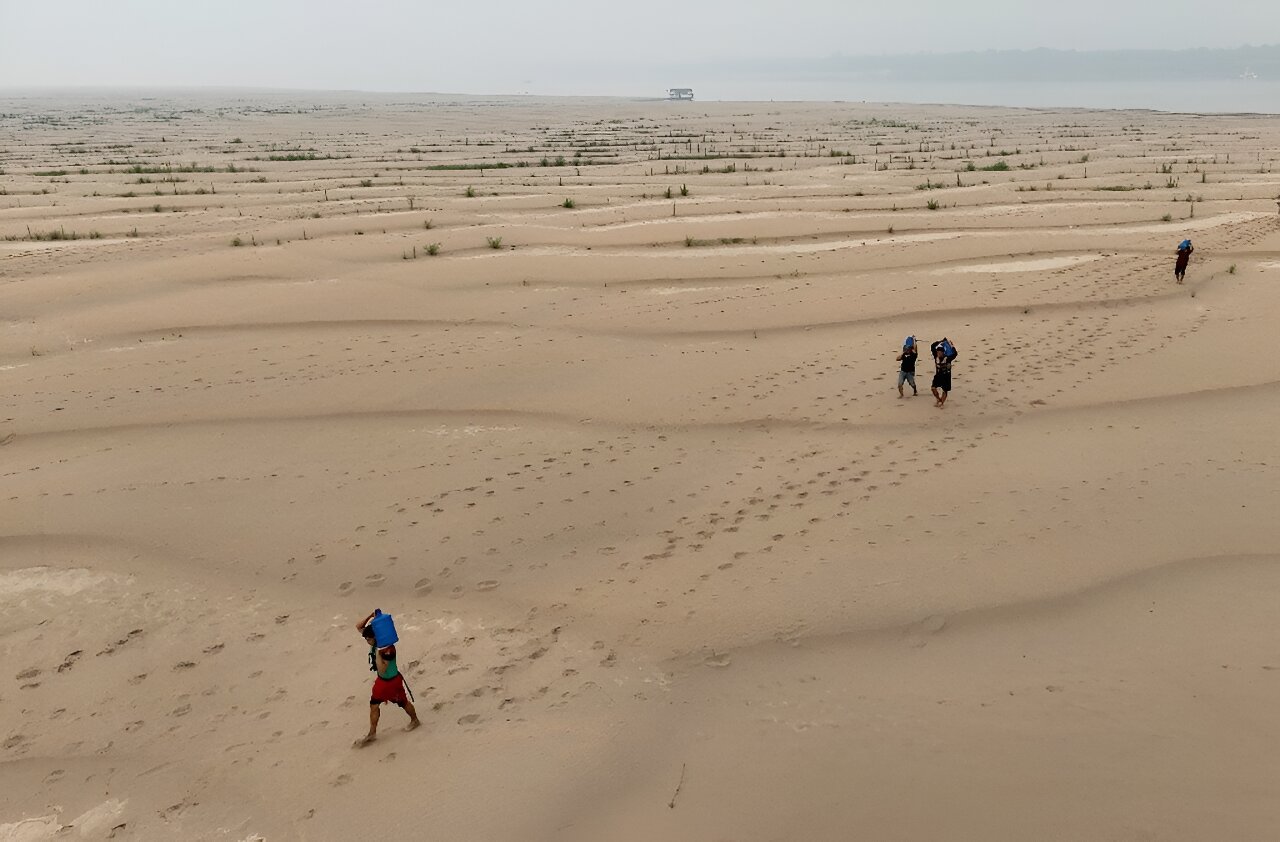Only the youngest and strongest villagers now brave the crossing of a vast, blistering stretch of sand where, in normal times, the waters of the mighty Madeira River flow in the Brazilian Amazon.
Experts link Brazil’s historic drought to climate change. The parched conditions have fueled wildfires in the Amazon and elsewhere in the country that have clouded major cities in smoke pollution.
For much of the day, the dry riverbed becomes an inferno underfoot.
The roughly one hundred residents of Paraizinho “are tackling that beach on foot to transport the food and water we need here. It’s a very difficult time.”
Five community volunteers recently carried containers of drinking water barefoot from Humaita to Paraizinho that used to be easily transported on canoes across the river.
Faced with the water shortage, residents treat river water with chlorine to bathe and wash dishes or clothes.
Communities all along the banks of the Madeira River—an important route for the trade of soybeans, fish and fuel—are struggling. Some areas which also rely on Humaita have it worse than Paraizinho, residents of the village say, as they are even further away.
Intense fires elsewhere in the Amazon have also brought a haze of smoke to the village and surrounding locale.
Authorities blame human activity for most of the recent fires in the country, which are often linked to clearing land for agriculture.


